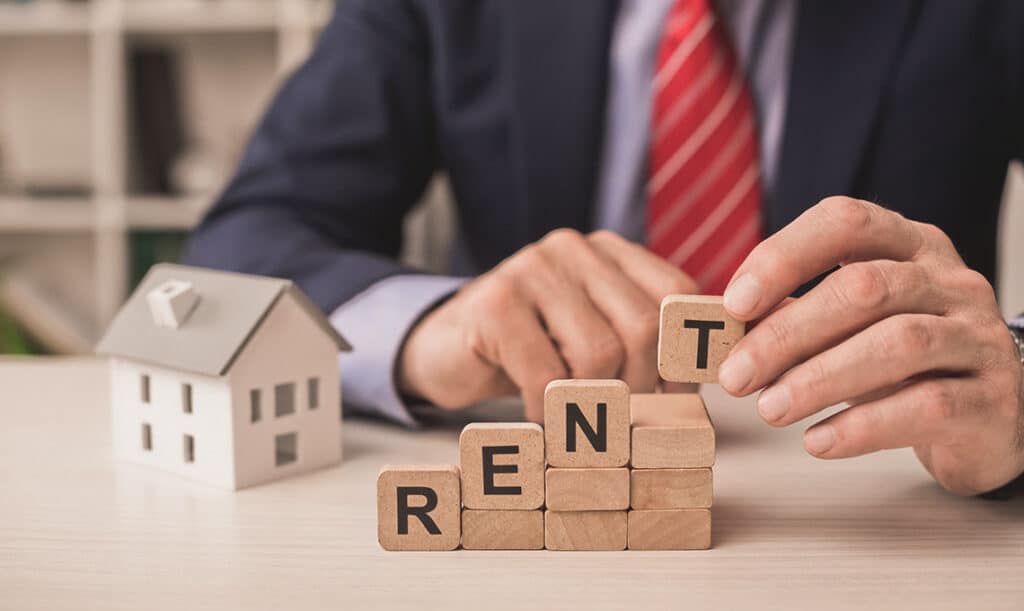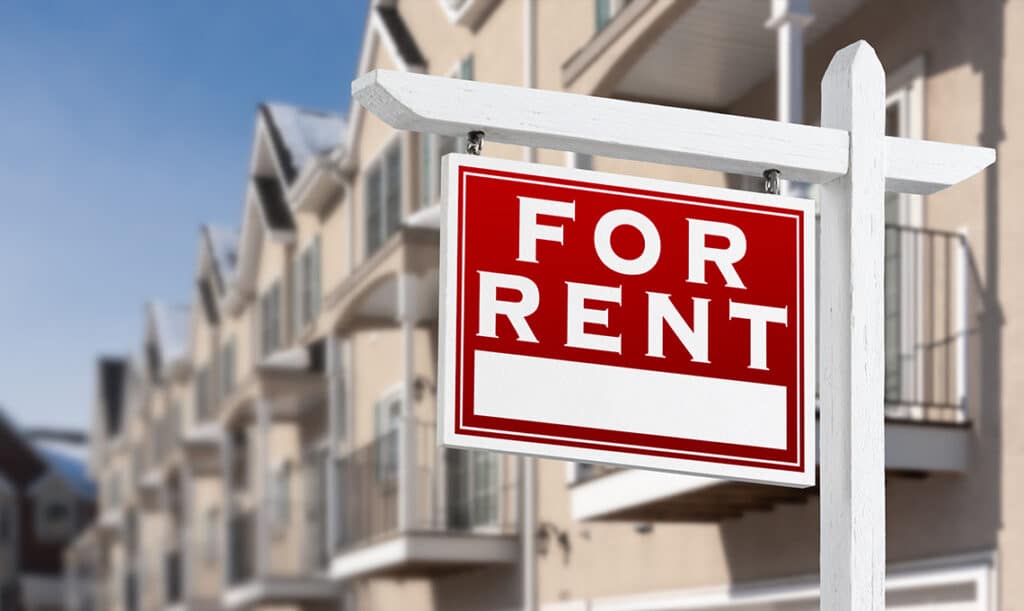
You can’t just raise rent overnight to match what neighboring properties are charging or try to catch up after years of below-market rates. Even if the market is strong, the law controls how much you can actually increase rent each year.
The state caps annual increases at 8.6% this year under AB 1482, and local areas have their own laws, too. Every time you make a mistake with these laws, it will cost you. Owners can’t raise their rent to the market rate if they do it too fast, at the wrong time, or don’t give tenants the right notices.
Let’s talk about how to calculate legal rent increases and keep you out of small claims court.
Legal Rent Limits and Property Rules
When you look at the math, it’s actually pretty easy once you break it all down. For the 2024-2025 period that runs from August 1st through July 31st, San Diego County landlords can raise rent by no more than 8.6 percent. This number comes from the state’s formula under AB 1482, which pretty much adds 5 percent to the local Consumer Price Index.
The Consumer Price Index portion came in at 3.6 percent this year, and when you add that to the base 5 percent, you get that 8.6 percent limit. But AB 1482 also has a hard cap that prevents any increase from going above 10 percent in a twelve-month period. So even if inflation were to shoot up like crazy, you’d still be limited to that 10 percent maximum.
The 10 percent limit protects tenants from big rent shocks when the economy gets unstable. Your rent increases stay more predictable even when other costs are changing quite a bit – this steadiness helps tenants and landlords since tenants can budget ahead, and landlords can skip the problems that come with huge rent hikes.

Not every property has to follow these laws, though. AB 1482 leaves out a few types of properties that plenty of landlords don’t even know about. New construction built within the last fifteen years doesn’t have to follow the rent control requirements. Single-family homes that are owned by private people (not corporations) also get to skip these restrictions.
Duplexes where the owner lives in one of the units get the same exemption, too. The law goes after rental operations more than it does private property owners, which is why corporate ownership causes the rent control laws to kick in, while personal ownership usually doesn’t.
Corporate ownership does change how these laws apply to your property. Your legal structure decides if you have to follow rent control restrictions or if you can set prices any way you want. A condo that you own in your personal name operates under different laws than one you hold in an LLC or trust. Property lawyers see landlords miss this distinction all of the time and have to scramble to restructure their properties once they find out the laws apply to them.
Legal Rules for Your Rent Notices
Before you send out any rent increase letter, you’ll need to know about the legal requirements. How much you’re raising the rent determines how much written notice you have to give.
For increases under 10%, you’ll need to give at least 30 days’ written notice. For increases above 10%, you have to give 90 days’ written notice. These timelines aren’t something you can negotiate or change.
But if your property is covered by the San Diego Housing Commission, the laws are different. You’ll need to give at least 60 days written notice no matter how much you’re raising the rent – this applies even for small increases. When SDHC is involved, tenants get stronger protections across the board. These units have extra laws that give tenants more time before rent goes up. Your tenants get extra time to budget for the changes or look for other housing options.

Your letter has to include the right information, or it won’t count. You need to write the new rent amount, include the exact date when it starts, and mention AB 1482. The letter has to follow requirements for how it looks. You can get sample forms through the California Department of Real Estate to get it right.
One small mistake can cost you money. In the 2024 case Harcourt v. Becker, a landlord lost three months’ rent because of a small typo in the letter date. These kinds of mistakes can turn into expensive legal problems.
Remember that you can only raise rent twice in any 12-month period for units covered by SDHC – this limit applies even if your combined increases stay under the 8.6% cap. The law doesn’t look at percentages for how many times you can raise rent. These frequency limits are there to stop landlords from harassing tenants with multiple increases. You might think spreading increases across a few notices would be easier for tenants to manage. But the laws stop you from doing this.
Research the Market Before Raising Your Rent
You need to have numbers in hand before you raise the rent on your property. The best place to start is by looking at reliable sources that have real market data. CoStar and the Zillow Observed Rent Index are some of the best options to see what rates look like. Your local REALTOR board can also help you find recent rental comps in your area. Having data always beats guessing what you should charge.

The San Diego Apartment Association publishes reports that break down rental patterns by neighborhood. These reports are worth reading because they show you what’s actually happening in your particular market. Once you’ve pulled together all this data, create a side-by-side comparison of your property with three similar rentals that are nearby.
Neighborhood-level data will teach you pricing patterns that citywide averages usually miss. Your block might bring in premium rents while the area just two miles away struggles with vacancies – this focused strategy can help you avoid pricing mistakes.
Say you own a two-bedroom place in Mission Valley. You’d want to look at three other two-bedroom units within a few blocks of yours. You’d compare the rent, amenities, and condition of each property – this gives you a picture of where you stand in the market. Three comparisons usually give you enough info.
Here’s where it gets interesting, though. What if you find out that you’re already charging 4% above the median rent for your area? That might make you think twice about raising the rent any more. Then again, maybe a $50 bump would help cover your new water heater costs. Sometimes, the math works in your favor, even when market rates seem tight.
Your market position tells you if you have room for an increase or if it’s better to wait. Tenants who see that you’re already top dollar may push back harder on any raise. You’ll also get a better sense of if your maintenance costs are in line with what similar properties are dealing with.
I’ve found that longtime property owners have figured out something about tenant psychology. If you explain a rent increase by pointing to recent improvements or amenities that you’ve added, tenants are usually more accepting of modest hikes.
Better Ways to Work with Tenants
You don’t have to default to the maximum rent increase every time. Sometimes, a creative strategy works just fine when you’re trying to keep reliable tenants around.
Looking at it this way changes how you work with your tenants. Property owners who look for creative services instead of trying to maximize every dollar usually keep their tenants longer. Your tenants will start to see you as someone who works with them.
You could throw in something extra along with a modest increase. Maybe your tenant would like a thermostat that helps cut their utility bills. Or you could add a storage locker for them. If they’re on a month-to-month lease, a reserved parking spot could be just what they need. These extras can mean more to tenants than you might expect.

A UC Berkeley study from 2022 found that 40% of tenants move out of their units when rent goes up by more than the average number in their area. Stats like that should make you think twice before pushing for aggressive increases. Sometimes, keeping reliable tenants happy makes more financial sense when you add up these turnover costs that pile up – you have lost rent, advertising costs, screening fees, and repairs. Property owners who lose two tenants per year are looking at nearly $10,000 in replacement costs alone. You can see how keeping tenants can become worth more than you could make with aggressive increases. You could also try spreading out rent increases instead of one big jump. Maybe raise it 2% now, then another 4% in six months if local laws let it – this way, tenants have time to adjust their budgets without being hit with something big all at once. Most people can manage gradual changes much better than sudden ones. A family with kids who have a long commute could be much happier with a small rent increase along with energy-efficient upgrades.
Just make sure that you don’t make the common mistakes here. If you promise improvements, don’t drag your feet on actually doing them. And be careful with any all-in deals because they might go against utility billing laws in your area.
Real Numbers and the Common Mistakes
Here’s the math because even the most experienced landlords can mess this up. The maximum rent increase in San Diego is 8.6% for leases that run from August 1st, 2024, through July 31st, 2025 – this number comes from the base 5% plus the local CPI of 3.6%. These dates matter more than you might think.
Here’s what happens when you use real numbers. If your tenant currently pays $2,000 per month, you would multiply that amount by 1.086 to get $2,172. That’s your new maximum rent. Now, let’s say you own a higher-end property where the rent is currently $3,450. Your calculation would be $3,450 times 1.086, which equals $3,746.70.
It gets harder when you need to prorate for mid-lease renewals. You can’t just apply the full percentage whenever you want during the year. The timing has to line up with the lease renewal dates. If you time your rent increases wrong, then you’ll be dealing with penalties in San Diego County. Tenants get triple damages when landlords raise rent outside the allowed time window. Your rental income stops completely during dispute periods while your legal costs go up.

The San Diego Housing Commission found about 12% of DIY landlords accidentally overcharge their tenants. Most of these mistakes happen because people use the 8.6% increase twice in one year or they mix up different CPI numbers. Some landlords use the national CPI instead of the local one, which throws off the entire calculation. Lots of landlords just skip double-checking their math altogether.
Even experienced investors can misplace decimal points before their morning coffee. That’s why you should always double-check your math and keep records of when you last raised rent. If you overcharge by accident, small claims court gets expensive fast.
When you overcharge tenants, it usually costs landlords around $8,400 in San Diego housing court. Judges give back-rent plus attorney fees when tenants fight back against improper increases.
Maximize Your San Diego Rental Property
When you manage rental properties successfully, you need to stay on top of the laws while you build long-term relationships with quality tenants. The steps we went over – checking if your property is exempt, calculating increases that stay within legal limits, and keeping your profits balanced with tenant satisfaction – give you a strong foundation that protects your investment and your reputation. Most property owners find that following these laws becomes second nature after they’ve done it a few times.
This foundation matters because your reputation spreads faster than you might think in local rental markets. Property owners who always follow the right steps build trust with their existing tenants and bring in quality applicants through word of mouth. When you use the same strategy to rent increases, it shows tenants that you’re professional, and they usually stay longer when they know what’s coming.
Remember that the CPI adjustment will reset again on August 1st, 2025, which means you’ll need to stay up to date with these changes if you want long-term success. That date will come up sooner than you might think. California’s laws give landlords and tenants an idea of what to expect. But this only works when property owners take the time to know these laws and follow them. When your rent increases are transparent and based on real numbers, they protect your income and keep the community stable, which makes your properties worth more over time.

Easy laws help everyone because they take the guesswork out of rent increase decisions. Tenants can plan their finances around predictable increases. Landlords can plan their cash flow when they know what to expect – this stability helps create stronger rental markets where landlords and tenants can do well.
With all that said, you don’t have to figure out these laws by yourself while you try to get the most from your property. The laws change enough that even experienced owners can make mistakes. At Palm Tree Properties, we take care of the small details so you can focus on the bigger picture of building wealth through real estate.
Our team stays up to date with the local laws and market changes – it helps property owners make decisions that increase their returns without the stress of dealing with every little law. You should see what your property could be earning. Get your free rental property review and find out how professional management can make your investment grow even more.

